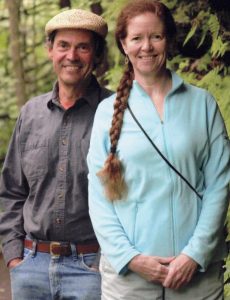What makes your land so special to you?

Shelley
In the late 1930’s my paternal grandparents built a rustic cabin on the north shore of Tilden Pond as a reprieve from their busy life in Worcester, MA. It afforded the comforts of the day: a fireplace for heat, kerosene lights for illumination and a hand pump and a two-holer backhouse for plumbing. My grandmother was in heaven.
While my grandfather continued to work in MA, my grandmother and her three kids lived at camp for the summer. A naturalist by avocation, she could name every tree, bush, bird, plant or woodland creature that caught her curious glance. And if she didn’t spend at least a couple hours every day trying to catch small-mouth bass, then her day was incomplete. And she passed on that knowledge to her kids, particularly to my father.
As a boy I spent at least part of every summer at camp, sometimes with my family and sometimes alone with my grandparents. On those occasions when I spent time alone with my grandparents, my grandmother would take me on adventures exploring the woods, swamps and fields around the pond. She showed me where every bird nested and where every animal had a den or burrow. And without fail she took me fishing every day, dressed in her housecoat and a wide-brimmed hat. At the time, leopard frogs were the bait of choice and I spent the early morning hours catching frogs for the day’s fishing. It truly was a young boy’s nirvana.
How did you acquire your land?
After college, I decided it would be great to have a piece of land of my own. So, in 1973 my wife and I bought the acreage we now live on and built a camp site on the pond where we spent summer weekends away from our weekday life elsewhere in Waldo County. And in 1990, we decided to build our house and live year-round in Belmont.
When we first purchased the property (approximately 85 acres) the previous owners had retained two lots at the landing where the woods road ends. Additionally, they had sold an adjacent lot to a friend in Vermont. In the 1930’s the point (a 6-acre piece previously owned by Horace Coombs and forming the most pronounced land form on the pond) was broken off from the original parcel that comprised the Nettie Gordon farm. It was her old homestead that we bought. Over the past 30 years, we put the parcel back together, buying the two lots the previous owner retained and soon thereafter the lot they had sold to their Vermont friend. After years of discussions with Horace Coombs, who was a dear friend of my father and grandparents, he finally allowed us to buy the point and the camp that sits on it, thus reuniting all the lots of the original farm.
We chose to build the house and shop building on the site of the old homestead rather than on the shore, thinking that we’d prefer to have a beautiful place to walk to instead of living on the nicest part of the property. And as it turns out, walking to the pond over the woods road or the several trails we built is one of our favorite things to do, whether on foot, snowshoes or electric golf cart.
Why did you choose to conserve your land? What motivated you?
We have traipsed these fields and woods for almost 50 years, before we raised our son, during the time he and his friends played in the woods and in the water and long after he left home. The land has been the constant in our lives whenever other changes have intervened.
How did you conserve your land?
In keeping with our attachment and desire to preserve our land, we contacted Coastal Mountains Land Trust about putting a conservation easement on the majority of the property to protect it from any future development and allow it to exist in its current state in perpetuity. And though we realize that the easement reduces the financial benefit we could have received by developing or selling the piece, it seemed incongruous with our love of the land to do either of those things. The land endures while we all fade away.

